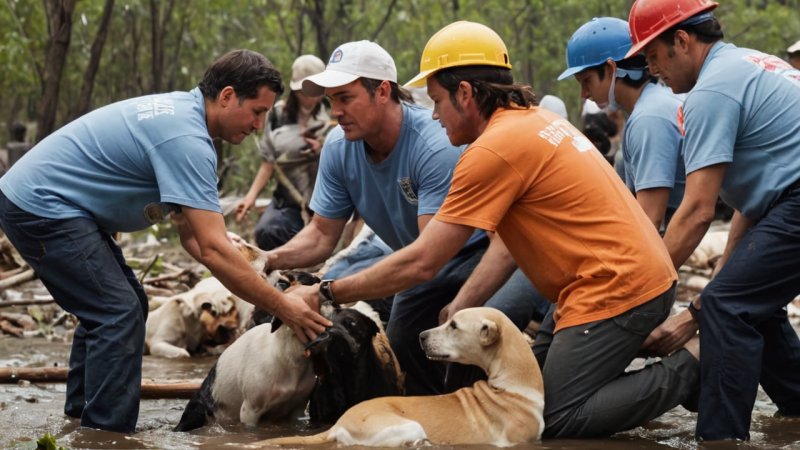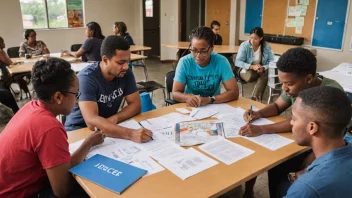Natural disasters can wreak havoc not just on human lives but also on the animals that share our communities. As hurricanes rage, wildfires blaze, and floods sweep through towns, countless animals find themselves in peril, left to fend for themselves in the chaos. Understanding how to support animal welfare during these critical times is crucial for mitigating suffering and ensuring that our furry, feathered, and scaly friends receive the help they need. This article will explore various ways individuals can contribute to animal welfare during disasters, highlight important initiatives, and provide guidance on how to get involved.
The Impact of Disasters on Animals
When disaster strikes, animals are often among the most vulnerable. They may be abandoned by their owners, trapped in dangerous situations, or separated from their families. According to the Humane Society, millions of pets are affected by disasters each year, and many of them never find their way home. Additionally, wildlife can suffer devastating losses, with entire habitats destroyed and food sources diminished. Understanding the scope of the problem is the first step in mobilizing support for animal welfare during these crises.
Recognizing the Need for Preparedness
Preparedness is key to safeguarding animals during disasters. This includes having emergency plans in place for pets, livestock, and wildlife. Individuals can take proactive measures by creating a disaster kit that includes food, water, medications, and identification for their pets. Community organizations often provide resources and training on how to prepare for disasters, emphasizing the importance of including animals in emergency plans. By being prepared, we can reduce the number of animals left behind when disaster strikes.
Initiatives Focused on Animal Welfare
Numerous organizations work tirelessly to support animal welfare during disasters. These initiatives often focus on rescue, rehabilitation, and rehoming efforts. For example, the ASPCA (American Society for the Prevention of Cruelty to Animals) has developed a disaster response team that deploys to affected areas to rescue animals, provide veterinary care, and assist in finding temporary shelters. Similarly, local animal shelters often collaborate with national organizations to ensure that animals are not forgotten during times of crisis.
Volunteer Opportunities
One of the most impactful ways to support animal welfare during disasters is through volunteering. Many organizations rely on volunteers to help with rescue efforts, animal care, and community outreach. Opportunities may include:
- Assisting with the evacuation and transport of animals from disaster zones
- Providing foster care for pets displaced by disasters
- Helping with clean-up efforts at shelters and rescue sites
- Participating in community education programs about disaster preparedness
By volunteering, individuals can directly contribute to the welfare of animals in crisis while also raising awareness about the importance of animal care during emergencies.
Community Support and Advocacy
Advocacy plays a significant role in ensuring that animal welfare is prioritized in disaster response efforts. Individuals can engage in community initiatives that promote the inclusion of animals in disaster planning. This may involve working with local governments to establish protocols for animal evacuation or pushing for legislation that protects animals during disasters. Community awareness campaigns can also encourage pet owners to develop emergency plans that include their animals, ultimately leading to better outcomes during crises.
Fundraising and Resource Collection
While this article does not focus on fundraising, it is worth noting that resource collection drives can be instrumental in supporting animal welfare during disasters. Communities can organize drives to gather supplies such as food, bedding, and medical supplies for affected animals. Collaborating with local businesses and organizations can amplify these efforts, ensuring that resources reach those in need. These initiatives not only provide immediate assistance but also foster a sense of community and shared responsibility for animal welfare.
Staying Informed and Engaged
In today’s digital age, staying informed about ongoing disasters and animal welfare initiatives is more accessible than ever. Social media platforms and news outlets often provide real-time updates on disasters and the animals affected. Following reputable animal welfare organizations can also keep individuals informed about volunteer opportunities, advocacy initiatives, and ways to help. Engaging with these resources allows individuals to act swiftly and effectively in times of need.
Conclusion
Supporting animal welfare during disasters requires a combination of preparedness, community involvement, and advocacy. By understanding the unique challenges animals face in times of crisis, individuals can take meaningful action to help those in need. Whether through volunteering, advocating for better policies, or simply spreading awareness, everyone has a role to play in ensuring that animals receive the care and support they deserve during disasters. Together, we can create a compassionate response that prioritizes the welfare of all beings, human and animal alike.






